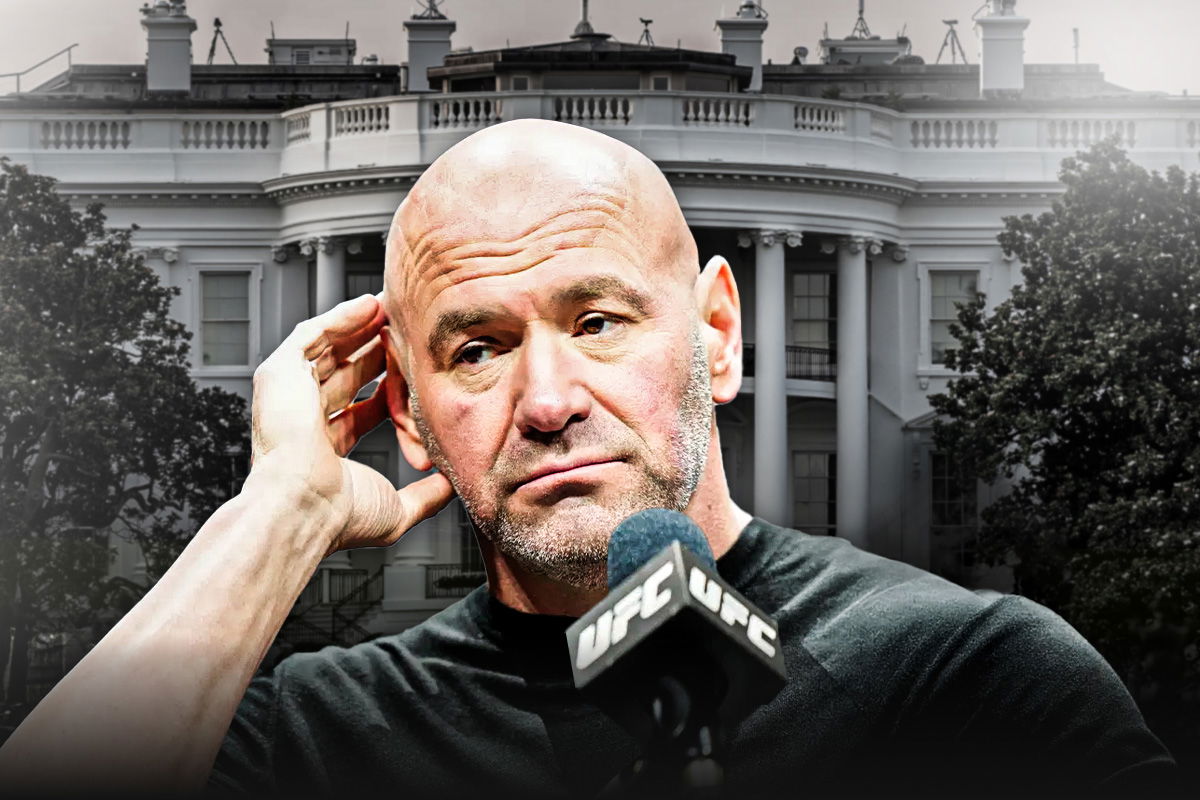
Imago
Credits: IMAGO

Imago
Credits: IMAGO
A few days ago, at the UFC 319 post-fight presser, Dana White stated, “If I had to make odds, it’s a billion to one that I put Jon Jones on the White House card.” This isn’t really a surprise, considering White had said the same thing a few weeks ago about Jones being unreliable for big occasions. But the conversation here is bigger than the former two-division champion. It’s about the White House card. Come July 4, 2026, Dana White might not have anyone walking out draped in the red, white, and blue flag for the big fights! Sure, it’s the promotion’s biggest stars colliding inside the cage in a historic event, cheered or booed by 20,000+ fans. But the real weight lies in the date itself—July 4th! It’s America’s Independence Day. Yet, with the UFC currently running short on American champions, it begs the question: Could the grandeur of such an occasion lose its shine and spiral into a nightmare for Dana White?
Watch What’s Trending Now!
The promotion is already set for a massive transformation in 2026 with its historic $7.7 billion, multi-year deal with Paramount+ and CBS. This massive shift will completely reshape how fans watch the sport! As the UFC is set to bid adieu to the pay-per-view and move fully into the subscription model, it hopes to draw a surge of new viewers. Yet, with fewer USA fighters holding championship gold, the vision that UFC CEO Dana White and U.S. President Donald Trump have been building for the White House event could face unexpected hurdles. And here’s why!
Note: The champions listed here refer only to undisputed titleholders, not interim or BMF champions.
ADVERTISEMENT
When did U.S. dominance in the UFC peak?
To understand how having fewer American champions could affect the White House event, we first need to look at how undisputed U.S. champions have shaped the sport throughout the promotion’s 30+ years of history. To begin this task, let’s revisit the pre-Zuffa era, when Mark Coleman, Randy Couture, and Frank Shamrock stood out as some of the greatest American champions, laying the foundation for fans to truly engage with mixed martial arts. The lone exception came in 1999, when Bas Rutten, originally from the Netherlands, broke through by capturing the heavyweight title. But, as the early ages of promotion ended, a new chapter began.
Dana White, along with the Fertitta brothers, took over the UFC in 2001 and started a new era in combat sports. Although American champions remained the dominant force, global fighters slowly began making their presence felt. The addition of the middleweight and lightweight divisions also gave the promotion a fresh structure. Still, from 2001 to 2005, heavyweights and light heavyweights stood as the poster boys of the sport, with Josh Barnett, Randy Couture, and Chuck Liddell becoming fan favorites. At the same time, Vitor Belfort, Carlos Newton, and Andrei Arlovski emerged as a few recognizable global champions. But once again, B.J. Penn, Matt Hughes, and Jens Pulver in the lower divisions kept the weight on the U.S. side — momentum that surged even more in the timeline that followed.
ADVERTISEMENT
Here comes the pain! That’s the perfect way to sum up the 2006–2010 timeline. This was the era when the UFC saw the rise of some of its biggest heavyweight and light heavyweight stars. Brock Lesnar, Frank Mir, Shane Carwin, and even Randy Couture brought the company massive fortune in pay-per-view buys. And that’s not all! Quinton ‘Rampage’ Jackson, Forrest Griffin, and Rashad Evans added the much-needed excitement to the sport. Guess what? They were American champions who connected with the audience through their brash personalities and swagger. But the lower weight divisions had slowly started to see signs of significant changes.
Top Stories
UFC 323 Payouts: How Much Will Merab Dvalishvili, Petr Yan, Alexandre Pantoja, and Others Earn?

Dana White Defends His Behaviour Toward Tom Apsinall After UFC 321 Eye Poke
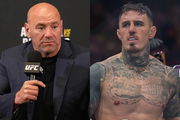
Joe Rogan-Daniel Cormier Urged to Step Down After ‘Ruining’ Tatsuro Taira’s UFC 323 Moment
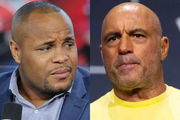
What Happened to Alexandre Pantoja? Freak Injury Makes Joshua Van Second Youngest Champ at UFC 323
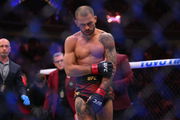
Dana White Admits He Doesn’t “Give a Sh*t” About Arman Tsarukyan’s UFC Ranking
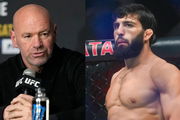
ADVERTISEMENT
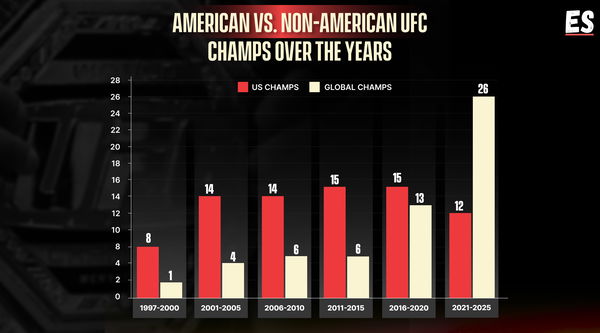
While B.J. Penn shifted to the lightweight division, the emergence of Georges St-Pierre slowly kicked off. ‘Rush’ wasn’t alone! The fans witnessed the start of the Brazilian surge as Anderson Silva and José Aldo began their reigns. And honestly, it wasn’t just the lower divisions either, as Brazilian champions like Mauricio Rua and Lyoto Machida also claimed titles during this period. However, the UFC still largely remained in American hands, with U.S. champions holding an edge over their international counterparts. And the scenario didn’t change much in the following timeline either.
ADVERTISEMENT
From 2011 to 2015, Cain Velasquez stood as the lone American heavyweight champion, while Brazilians Junior dos Santos and Fabricio Werdum ruled the division. However, the story was very different at light heavyweight. Jon Jones and Daniel Cormier ragdolled the entire 205-pound division, cementing their dominance during this period. In the lower weight classes, American champions shone even brighter. Chris Weidman ended Anderson Silva’s legendary 16-fight win streak to claim the middleweight title, only to be replaced by another U.S. champ, Luke Rockhold, keeping the division firmly American.
At welterweight, Carlos Condit, Johny Hendricks, and Robbie Lawler all carried the 170 lbs crown. Even before Rafael dos Anjos broke through as a Brazilian lightweight champion, Anthony Pettis and Benson Henderson had already kept the belt in American hands. And further down, Conor McGregor became the international flag bearer, dethroning José Aldo to take the featherweight crown. Still, beneath him, American champions continued to dominate their divisions.
T.J. Dillashaw followed Renan Barão’s reign to reclaim American presence at bantamweight. Meanwhile, Demetrious Johnson’s legendary run also began during this era. Even the newly added women’s bantamweight division stayed in American control — first with Ronda Rousey, then when Holly Holm took over. In the women’s strawweight division, Carla Esparza became the inaugural champion before Joanna Jędrzejczyk rose from Poland to claim the belt.
ADVERTISEMENT
So, as we’ve seen so far, American champions have held the top position since 1997. And 2011–2015 might be considered the most dominant period overall, covering nearly every division except the women’s flyweight division, which only came into effect in 2017. But from this point, the entire UFC championship picture was set for a complete shift.
Decline timeline: The rise of global champions
It wouldn’t be a stretch to say that American fighters were far ahead of those from any other country in title pictures throughout the timelines we mentioned earlier. The promotion also enjoyed colossal popularity under them. However, after that period, everything began to shift rapidly—to the point where global champions not only started to catch up but eventually closed the gap and even began to overtake them!
ADVERTISEMENT
2016–2020 marked a period when the UFC began seeing international champions emerge across most divisions, slowly staking their claim. During this time, the heavyweight division saw the title change hands between Daniel Cormier and Stipe Miocic. Meanwhile, Jan Blachowicz became the first male Polish fighter to claim a UFC title (the 205 lbs belt), effectively ending Jon Jones’ LHW era. But it was the lower-weight champions who truly stole the spotlight — especially in the middleweight division. After Michael Bisping, as the first British champ, held the belt, non-US champions like Georges St-Pierre, Robert Whittaker, and Israel Adesanya followed him.
Similarly, Conor McGregor and Khabib Nurmagomedov also took center stage during this era—not just as lightweight champions, but as icons of the sport for Ireland and Russia. Meanwhile, Kamaru Usman, originally from Nigeria, ended Tyron Woodley’s reign as the welterweight champion. The featherweight division also saw its share of title shifts, passing through the hands of Jose Aldo, Max Holloway, and Alexander Volkanovski, with ‘Blessed’ becoming the only American to hold the 145 lbs belt.
ADVERTISEMENT
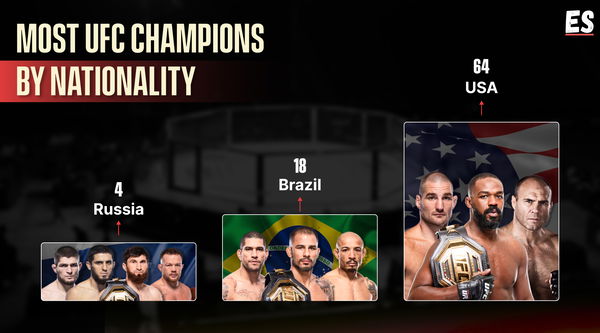
However, even as global champions began emerging across most divisions, the bantamweight class remained heavily American at the time. Dominick Cruz, Cody Garbrandt, T.J. Dillashaw, and Henry Cejudo served as the division’s flag bearers. That dominance came to an end when Petr Yan became the first Russian bantamweight champion. The flyweight division experienced a similar shift, with Deiveson Figueiredo becoming the first Brazilian to claim the 125 lbs belt.
ADVERTISEMENT
The women’s division also began to see significant changes, as Amanda Nunes, Valentina Shevchenko, and Zhang Weili replaced Miesha Tate, Nicco Montaño, and Rose Namajunas as champions. This era can rightly be called the period when global champions saw an astronomical rise. By the end of this timeline, the tally was close—15 U.S. champions versus 13 global champions. But in the following years, international fighters would completely outnumber Americans, leaving Dana White with far fewer U.S. champions
Dana White does not have many American Champs
From 2021 to 2025, the nightmare period for U.S. champions officially began. It practically drained Dana White’s pool of a few talented American fighters who had been connecting with the local audience. Meanwhile, the rise of global champions became unstoppable, as they stepped in to become the faces of the modern-era superstars.
Starting with the heavyweight division, after Francis Ngannou, the Cameroonian champion, left the UFC, Jon Jones took over a division long dominated by American champions, holding it for a controversial two years. Then came Tom Aspinall, the third British fighter and current heavyweight champion. In the light heavyweight division, only Jamahal Hill represents the U.S. as a former champion during this timeline. Everyone else—from Teixeira, Prochazka, and Pereira to the current champ, Ankalaev- is a global champion. The middleweight division appears to follow a similar pattern.
Here again, Alex Pereira and Israel Adesanya had a brief tussle for the middleweight belt, until Sean Strickland became the first American middleweight champion since Bisping defeated Rockhold. It took almost a decade for the 185-pound division to see a U.S. fighter holding the belt. But that didn’t last long, as Dricus du Plessis from South Africa claimed the championship, and very recently, Khamzat Chimaev took the throne, once again crushing any chance of American dominance. Also, that didn’t get better further down the ladder.
The welterweight division was captured by the Brit Leon Edwards after defeating Kamaru Usman. The belt then went to Belal Muhammad, an American born and raised in Chicago but ethnically Palestinian. Even he couldn’t restore U.S. dominance, as Jack Della Maddalena from Australia claimed the welterweight throne earlier this year. In the lightweight division, Charles Oliveira, Islam Makhachev, and now Ilia Topuria have all held the belt—none from the U.S. But what about the featherweight and bantamweight divisions?
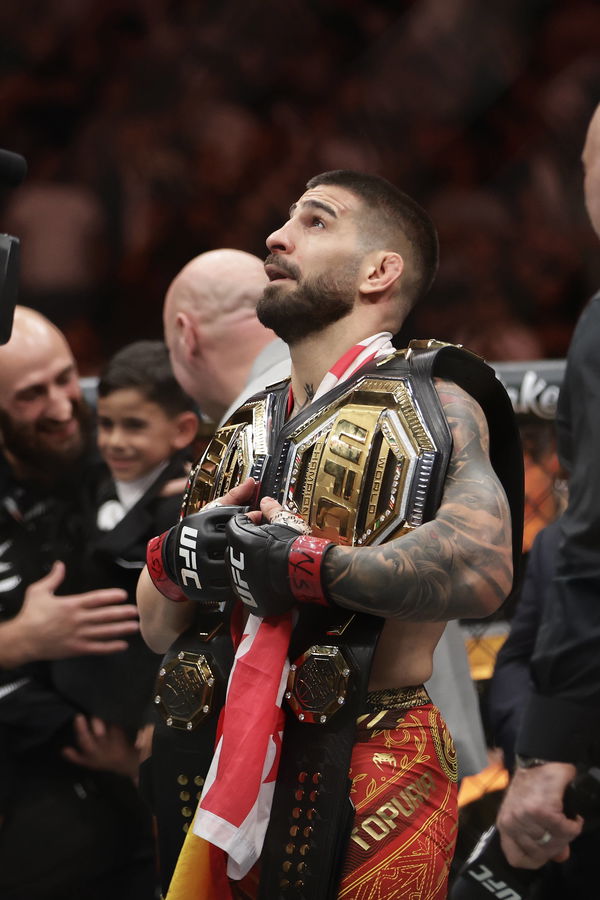
Imago
June 28, 2025, Las Vegas, Nevada, USA: Ilia Topuria and Charles Oliveira fight in the 5-round Lightweight Title Main Event bout during the UFC 317 event at T-Mobile Arena on June 28, 2025 in Las Vegas, Nevada. /Pximages Las Vegas USA – ZUMAp175 20250628_zsa_p175_225 Copyright: xAlejandroxSalazarx
Alexander Volkanovski also reclaimed the throne after the Georgian-Spaniard moved up, leaving Max Holloway as the lone 145-pound champion to date. The 135-pound division saw Aljamain Sterling and Sean O’Malley as U.S. champions. However, Merab Dvalishvili, although a U.S. citizen, originally hails from Georgia and still carries that heritage while remaining the bantamweight champion.
Moving further down, the flyweight division became a battleground for two highly coveted mixed martial artists from Brazil and Mexico: Deiveson Figueiredo and Brandon Moreno, who fought in some of the division’s earliest showdowns. After Moreno eventually had the last laugh in their rivalry, Alexandre Pantoja, another Brazilian, took the belt, still leaving no U.S. champion in the division.
Although the women’s bantamweight division remained largely American after Amanda Nunes retired, the belt moved between Raquel Pennington and Julianna Peña, both from the U.S., before finally resting on Kayla Harrison’s shoulders— and there’s hardly a more American choice than the former judoka and Olympian. There was a brief period when Alexa Grasso from Mexico proved to be Valentina Shevchenko’s challenge, but ‘Bullet’ has now firmly restored her position at flyweight. Despite a few hiccups against Rose Namajunas and Carla Esparza, Zhang Weili remains a constant presence in the strawweight division.
As of 2025, according to the UFC rankings, Dana White has only one American champion in Kayla Harrison, while all the other belts are held by fighters from various nationalities. If that’s the case, could it affect the UFC CEO and U.S. President Donald Trump’s highly anticipated White House event? Let’s dive in and find out.
Will the lack of an American champion hurt Donald Trump’s UFC White House card?
Whenever Dana White has spoken about next year’s UFC White House event, there’s been a sense of pride in hosting one of the most important days in his country. In a recent interview with ABC Sports, the UFC CEO opened up about how the Paramount+ CBS deal could be a game-changer for both the company and the audience. He stated, “Think about that, the 250th birthday of the United States of America, the UFC will be on the White House South Lawn live on CBS.”
The statement oozed confidence, but a question naturally arises: Is the promotion truly ready to pull off such an event? With American champions arguably in one of their worst phases, fans might need someone they can feel connected to for the event. While the UFC seems to be looking toward ‘The Notorious One,’ who’s already back in the testing pool, another superstar is also making a comeback, seeking a sort of payback for what happened with the UFC — and it’s none other than Jon Jones, widely regarded as Dana White’s greatest of all time.
‘Bones’ retired before facing Tom Aspinall, leaving the fight fans wanted to see unmade and leaving a sour taste in everyone’s mouth. Now, with the former UFC champ announcing that he’s either re-entered the testing pool or is preparing to return for the event, he’s met with a very firm response from Dana White.
View this post on Instagram
At the UFC 319 post-fight press conference, the UFC CEO said, “ I already said that I don’t trust him. I would not bet on him. If I had to make odds, it’s a billion to one that I put Jon Jones on the White House card.” The words may sound discouraging, but Jones didn’t take them that way.
It seems like White hasn’t been very impressed with the fighter he once deemed the greatest of all time. But the UFC White House card is still a year away, and anything can happen between now and then. Still, it’s interesting to see the UFC head honcho frustrated with Jon Jones, who has issued some sort of a response to the UFC CEO’s comments, surprisingly siding with him.
So, as things stand, if Jon Jones doesn’t headline the UFC’s 250th Independence Day card, who will? Colby Covington and Sean Strickland, two of the most seemingly patriotic fighters in the UFC, will be part of the spectacle. But it’s hard to see either of them headlining, and beyond that, there aren’t many options—except maybe Kayla Harrison, who could also potentially lose her title before the event even comes forth.
Now the ultimate question becomes: will the audience come expecting the 4th of July patriotic theme to be front and center, or will they just be happy to watch some of the best fights and leave with a thrill from the action? What do you think? Comment your thoughts below.
ADVERTISEMENT
ADVERTISEMENT
ADVERTISEMENT

